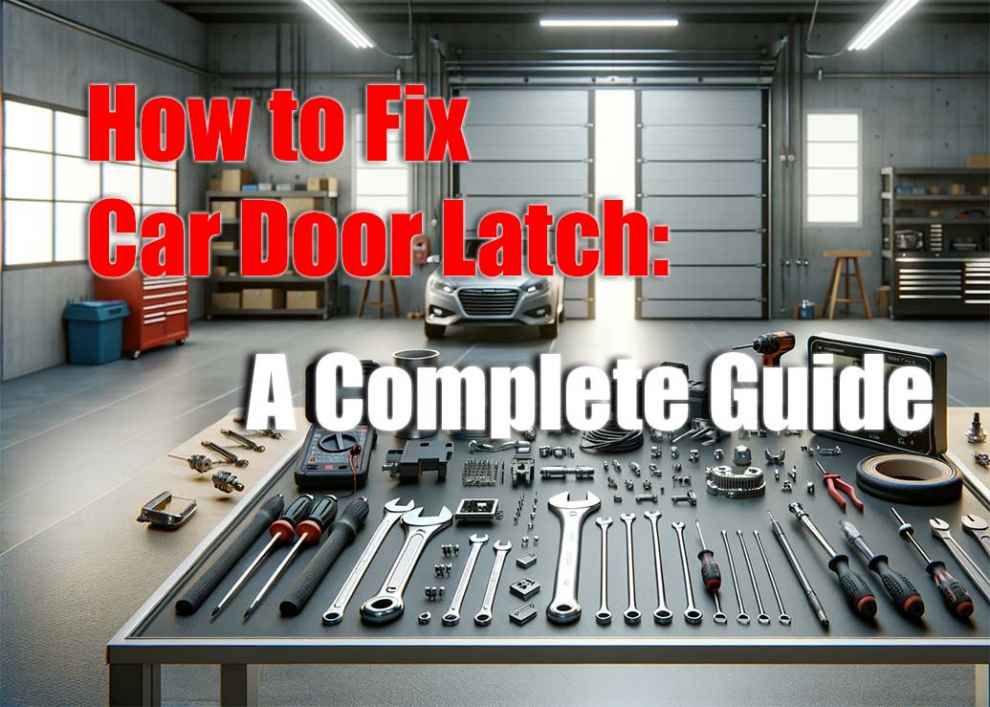Has your car door been refusing to latch properly lately? Does it stubbornly stick when you try to open it from the outside or inside? Do you have to slam it shut with excessive force just to keep it closed? If so, your door latch likely needs some attention. Car door latches engage with a striker plate on the door jamb to securely lock the door closed. With regular use over time, latch components can wear out or get gummed up with grease and dirt. The good news is you can often remedy a stuck latch yourself without needing professional repair. This article will provide clear steps to diagnose and fix a malfunctioning car door latch. With some basic tools and supplies, a little time, and these instructions, you’ll have your latch working good as new. Keep reading to learn how to inspect, clean, lubricate, adjust, or replace a faulty door latch on your own.
Inspect the Door Latch
The first step in diagnosing a faulty car door latch is to inspect it. Open the door and examine the latch mechanism on the door jamb as well as on the door itself. Look for any of the following issues:
- Debris buildup
- Visible damage or wear
- Sticky/resistant movement when operated manually
- Loose latch bolts
- Worn or broken latch teeth
Try operating the latch manually using the lock knob or lever. If it feels sticky or resists movement, cleaning and lubrication will likely help. Be methodical in your inspection so you can determine the cause of the problem.
Lubricate the Latch

Adjust the Latch Striker Plate
If lubricating the latch does not solve the issue, adjusting the striker plate may help. The striker plate is mounted to the door jamb and engages with the door latch to secure the door shut. First confirm the plate is not loose or rusted through. Then try loosening the striker plate screws slightly to allow small adjustments to its position. Align it properly so the latch can fully insert into the plate notch. The latch bolt must be able to adequately engage the notch for proper closure. Make adjustments incrementally and test operation each time. When aligned optimally, tighten the screws and test repeatedly.
If you drive a Jeep Wrangler, you may want to upgrade to heavy-duty tube doors for added protection and styling. We have another article discussing the Best Jeep Tube Doors that you can read to explore those options.
Replace the Door Latch
For latches that are damaged or so worn they cannot be repaired, replacing the latch is necessary. You can purchase replacement latches online or at auto parts stores. Carefully review the installation instructions. Replacing a latch involves removing interior door trim panels, disconnecting electrical connectors, unbolting the old unit, and installing the new latch. Proper alignment with the striker plate is key for correct operation. A latch replacement can be complicated but is very doable with patience and care.
When to Call a Mechanic
While many latch issues can be DIY repaired, it’s best to contact a professional mechanic if you cannot diagnose or fix the problem. They have specialized tools and expertise to efficiently inspect, adjust, or replace latches and striker plates. This ensures the repair is done properly for reliable door function. They can also determine if other issues like worn linkage rods or a faulty actuator motor are causing the problem. For total peace of mind, complex repairs can be left to the professionals. Also read here about Driving a Jeep With No Doors.
Conclusion
Stuck, broken, or malfunctioning door latches are annoying and inconvenient. In most cases inspecting, lubricating, adjusting, or replacing the latch will successfully resolve the problem. Pay attention to any changes in latch operation and attempt repairs promptly before damage worsens. For tricky repairs, reach out to a professional mechanic. With this door latch troubleshooting guide, a little time and elbow grease, your car door latch will be working smoothly in no time. You’ll once again be able to effortlessly open and close your door.

Add Comment